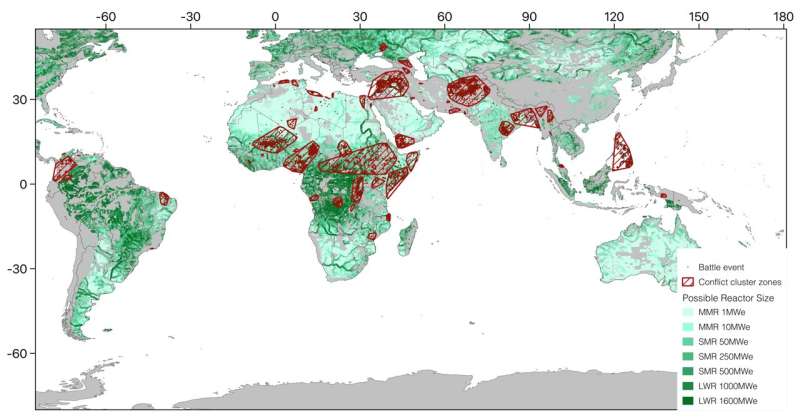
The development of technologies to generate affordable electricity and their deployment in remote or developing geographical regions has been the topic of many recent studies. These studies could inform future interventions and policies in these regions, by highlighting the most promising solutions.
One possible solution for electrifying geographical regions with no reliable access to electricity could be the use of small or micro modular nuclear reactors. While these small-scale reactors have so far been primarily considered for niche markets, they could also potentially help to bridge the gap in energy access between developed and developing countries.
While nuclear reactors are known to reliably produce large amounts of energy with small amounts of nuclear fuel, they come with considerable challenges related to their safety and governance. Studies exploring the advantages and limitations of deploying these reactors in developing countries could thus be very valuable, as they could inform the future actions of governments and energy companies.
Researchers at the Colorado School of Mines and Massachusetts Institute of Technology recently carried out an analysis aimed at identifying regions that could be best suited for the future deployment of small and micro nuclear reactors. The results of this global analysis, published in Nature Energy, suggest that while these reactors could serve approximately 80% of the population in regions that are currently disconnected from electricity grids, governance and economic-related factors would hinder their deployment.
"There has been a lot of discussion about the role that nuclear power could play in remote and developing regions," Mark R. Deinert, co-author of the paper, told Tech Xplore. "We wanted to do an analysis of this under several constraints—conventional siting criteria, cost relative to a commonly deployed renewable and battery technology combination, as well as constraints related to governance and institutional capacity. As nuclear reactors have been entangled in the Ukraine- Russia war, we also wanted to consider the conflict aspects."
Deinert and his colleagues employed population and satellite data captured at night time to identify geographical regions worldwide that do not have access to electricity. They then performed a series of analyses to determine how much of the population in these regions could be given access to electricity employing small-scale nuclear reactors, while also comparing the potential of these reactors with that of renewable energy solutions (i.e., solar cells, wind turbines, etc.).
"We performed a geospatial analysis that allowed us to overlap data as a function of location," Deinert explained. "We could then determine where micro and small modular reactors would be deployable relative to different criteria."
More information: G. F. L'Her et al, Potential for small and micro modular reactors to electrify developing regions, Nature Energy (2024). DOI: 10.1038/s41560-024-01512-y.
© 2024 Science X Network
Citation: Exploring the potential of micro nuclear reactors for electrifying developing regions (2024, June 13) retrieved 13 June 2024 from https://techxplore.com/news/2024-06-exploring-potential-micro-nuclear-reactors.html
This document is subject to copyright. Apart from any fair dealing for the purpose of private study or research, no part may be reproduced without the written permission. The content is provided for information purposes only.
